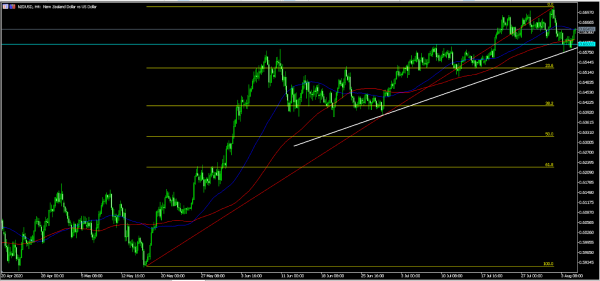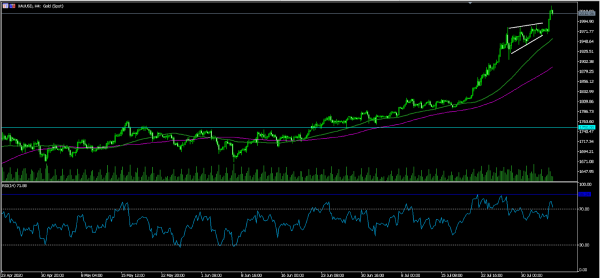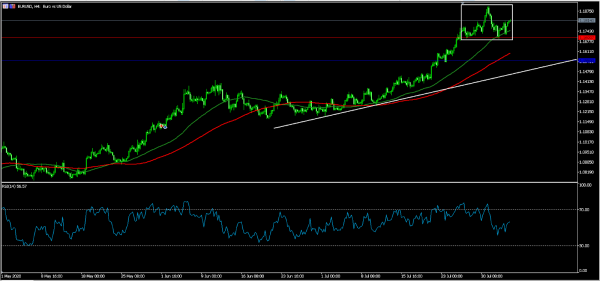The New Zealand dollar rose during the Asian session as traders reacted to the country’s employment numbers. According to the statistics office, the unemployment rate declined to 4.0% in the second quarter. This number was better than the 5.8% increase that analysts were expecting. In comparison, the unemployment rate in the US and EU is 11.1% and 7.8%, respectively. The participation rate dropped to 69.70% from the previous 70.50% while the employment change declined by 0.4% in the quarter.
The Australian dollar rose slightly as investors reacted to the positive numbers from the country. According to AIG, the construction index rose to 42.7 in July from 35.5 in the previous month. At the same time, the services PMI rose to 58.2 from the previous 53.1. This is an important measure of the country’s economy because services represent a substantial part of the economy. Meanwhile, in China, the services PMI declined from 58.4 to 54.1 in July. These numbers came a day after the RBA warned that the Australian economy would contract by 6% this year as the unemployment rate rises to 10%.
The US dollar eased a bit as investors continued to focus on stimulus talks. Democrats and Republicans have made minimal progress even after funding for the previous stimulus ran out. Later today, the dollar will react to the nonfarm employment change from ADP and US trade numbers. Other important data to watch today will be the Eurozone’s retail sales numbers, Canadian trade data, services and composite PMIs from around the world, Swedish GDP and industrial production data, and crude oil inventories.
EUR/USD
The EUR/USD pair is trading at 1.1813, which is slightly higher than yesterday’s low of 1.1715. On the four-hour chart, this price is above the 50-day and 100-day exponential moving averages. The price is also slightly below last week’s high of 1.1900. Further, the price seems to be consolidating between last week’s high and Monday’s low of 1.1700. Therefore, the outlook for the pair is neutral, with the 1.1900 and 1.1700 levels providing important resistance and support.
NZD/USD
The NZD/USD pair rose to an intraday high of 0.6645 following the New Zealand jobs numbers. On the four-hour chart, the price has just moved above the 50-day exponential moving average. Also, the price is above the ascending trend line that is shown in white. It is also above the 23.6% Fibonacci retracement level. Therefore, the pair is likely to continue rising as bulls target last month’s high of 0.6715.
XAU/USD
The gold price crossed the important milestone of $2,000 yesterday as focus remained on low-interest rates and quantitative easing. The XAU/USD pair is now trading at 2,013, which is above the 50-day and 100-day moving averages on the daily chart. The RSI remains at the overbought level of 70 while the price has moved above the ascending wedge that is shown in white. It seems like bulls have the momentum, which means that the price may continue rising.












